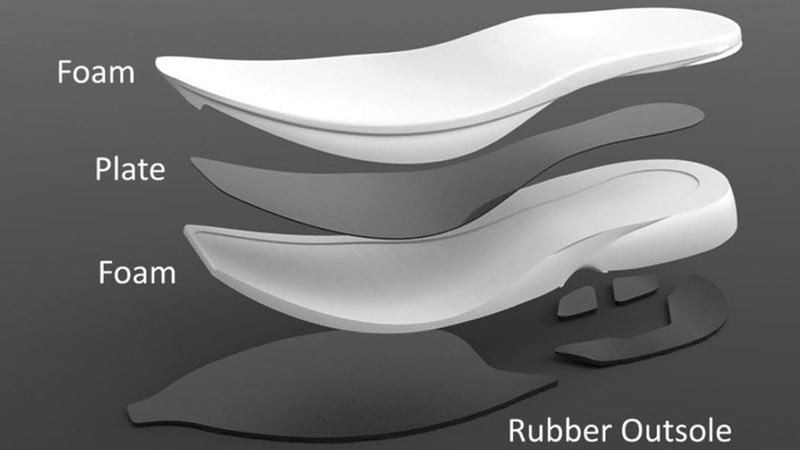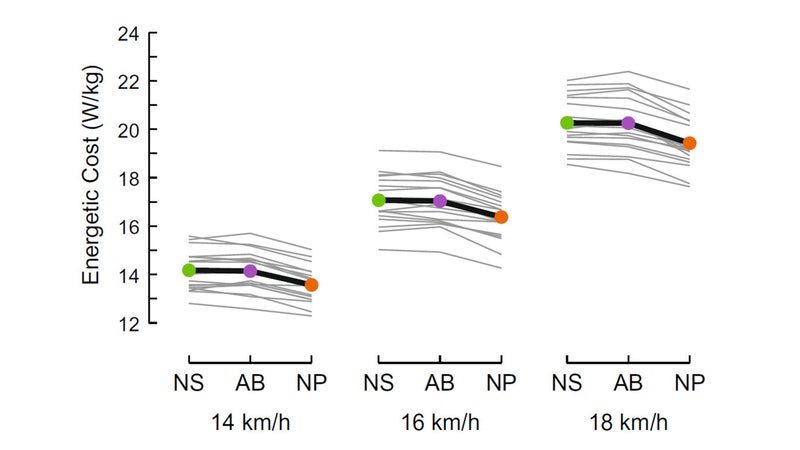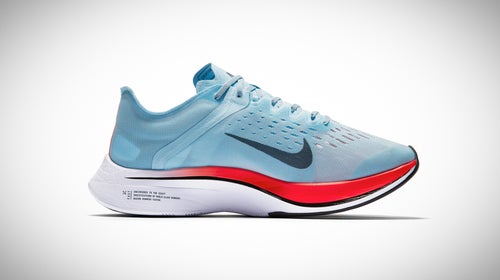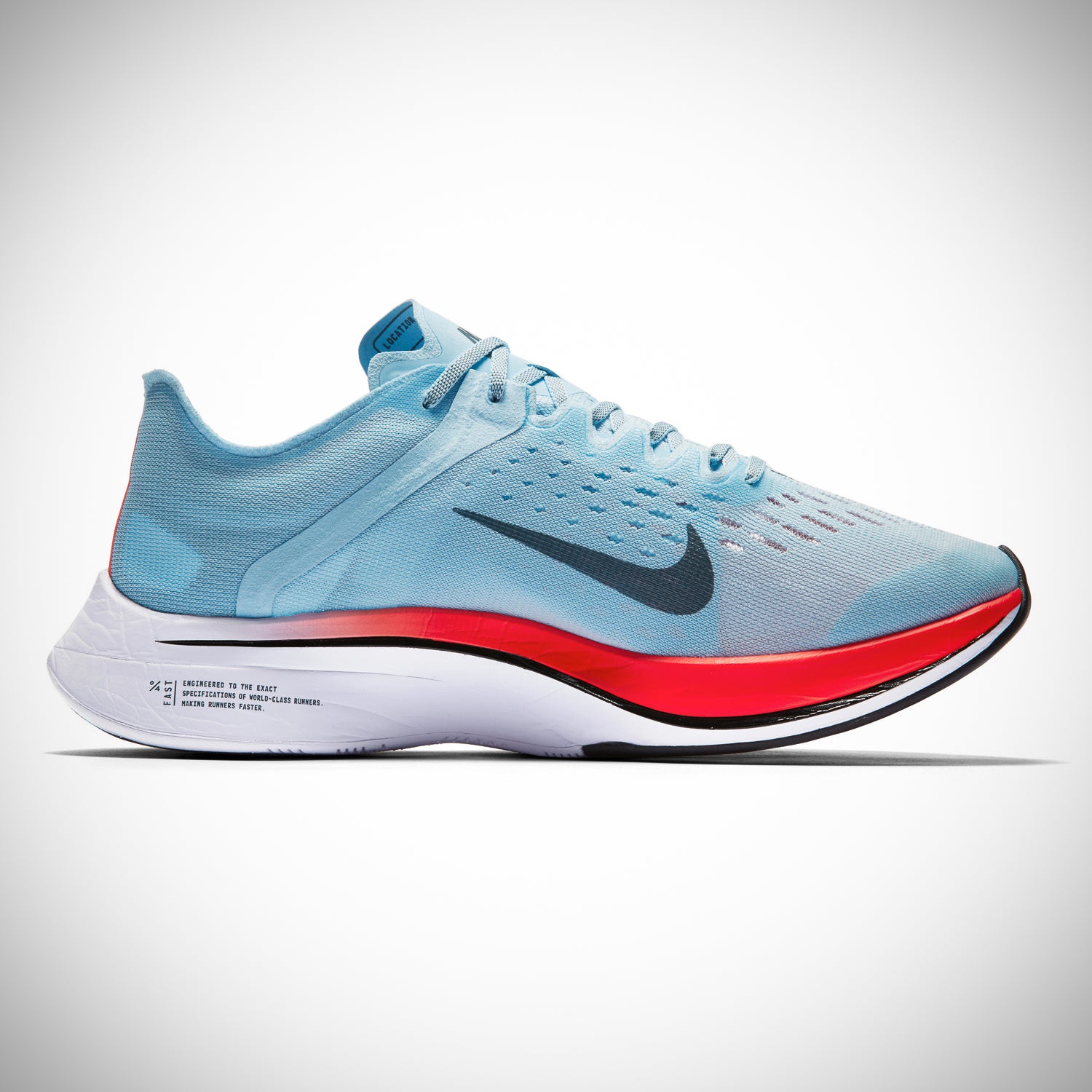Admittedly, it’s not the record they were originally planning for. But earlier this week, Nike’s controversial Vaporfly 4% shoes tagged along for their , when Oklahoma-based ultra star Camille Herron shattered the 100-mile mark at the Tunnel Hill trail race in Illinois. A four percent boost, as the name of the shoe promises? That’s child’s play: Herron’s time of 12:42:39 sliced more than an hour—and 8 percent—off the previous mark.
The Vaporfly shoes made their official debut in the lead-up to Nike’s Breaking2 marathon in Monza, Italy, in May, where Eliud Kipchoge notched a mind-blowing 2:00:25, albeit under non-record-eligible conditions thanks to a rotating cast of pacers blocking the wind for him. The “4%” label refers to the claimed improvement in running economy, a measure of oxygen consumption at a given pace, compared to other state-of-the-art marathon shoes. Nike hoped the shoes would help Kipchoge break the two-hour barrier—and although he didn’t quite make it, his performance launched a debate about the shoes that’s still going on.
On Thursday, the journal Sports Medicine finally published the complete peer-reviewed data behind the four percent claim (the full text is ), from a team at the University of Colorado’s Locomotion Laboratory led by Rodger Kram and his post-doctoral research associate Wouter Hoogkamer. The general outlines of the study were presented earlier this year at the American College of Sports Medicine conference (I wrote about them ), but there are some intriguing new details that are worth exploring.
At the heart of the shoe is a foam sandwich, with thick layers of a new foam surrounding a stiffened carbon-fiber plate. Importantly, the Colorado study didn’t aim to figure out how the shoe worked; it was only designed to assess how well it worked. Still, they did some basic mechanical testing, slamming a force actuator into the shoe and measuring the recoil to see how much energy it returned.

The Vaporfly prototype they tested returned 87.0 percent of the energy, compared to just 65.5 percent from Nike’s previous state-of-the-art marathon racer, the Zoom Streak 6. Interestingly, they also tested the Adidas Adizero Adios Boost 2, which was used by Dennis Kimetto to set the current men’s marathon record of 2:02:57. It returned 75.9 percent of the input energy. The authors note that versions of these two shoes (the Streak 6 and the Boost 2) had been used for all ten of the fastest marathons in history at the time the study started, in April 2016.
The other aspect of the mechanical testing was compliance: How much does the shoe squish down when you press it? In this case, the Vaporfly was almost twice as compliant as the other shoes, deforming by 11.9 millimeters compared 6.1 for the Streak and 5.9 for the Boost. This is what you get from having the Vaporfly’s distinctively huge platform of foam under the shoe’s heel.
But these are rigorous results from a respected laboratory. There’s something going on with these shoes.
This off-the-charts compliance could be one of the shoe’s key advantages. When you run, you naturally adapt your stride to get the “right” amount of shock absorption. In hard shoes on a hard surface, you bend your knees more to absorb the impact; in super-soft shoes, you keep them straighter. Outsourcing some of this shock-absorption to the shoes may save a bit of energy that you’d otherwise spend contracting the muscles around your knee joint.
The headline result, of course, was the change in running economy. In 18 sub-elite runners, the amount of oxygen consumed (which is a proxy for how much energy you’re burning) was lower by an average of just over 4 percent in the Vaporfly compared to both other shoes, at three different speeds between 6:54 and 5:22 per mile. And this is despite the fact that they added 51 grams of lead pellets to the Vaporfly to make them the same weight as the Boost shoes.
But average results are just part of the story. What about individuals? Remarkably, every single runner in the study was more efficient in the Vaporfly than in either of the other two shoes. Here’s what the individual running economy looked like for the three speeds (NS is the Streak, AB is the Boost, and NP is the Vaporfly prototype):

Another key detail: 8 of the subjects were heel strikers, and ten were midfoot or forefoot strikers—not that it ended up mattering much. The heel strikers got a slightly bigger advantage (4.63 percent better than the Boost) compared to the midfoot/forefoot strikers (3.50 percent better than the Boost). So the benefits don’t accrue only to fleet midfoot-striking elites.
Finally, they looked at various biomechanical parameters to look for clues about how the shoes worked. When running in the Vaporfly, the runners had a lower cadence and longer strides, and a greater peak force against the ground. But these differences were all on the order of 1 percent or less—not enough, the researchers believe, to explain the dramatic change in running economy.
All of this, from my perspective, should settle one debate and kindle another one (or perhaps several more). Do Nike’s new shoes improve running economy by four percent on average, give or take some individual variation? Yes. Sure, it will be nice to see studies looking at much slower runners, over longer durations, and under various other circumstances. And yes, this was a Nike-funded study. But these are rigorous results from a respected laboratory. There’s something going on with these shoes.
As yet unresolved are the debates over how they work, and whether the rules around shoe technology should be tightened to keep things simple and avoid a technological arms race. But the big question lingering in my mind is: Where does that four percent go when you leave the lab and race in real-world conditions?
There’s no doubt that runners have had great success in the shoes. Beyond Kipchoge and Herron, runners have been racking up World Marathon Major victories in the Vaporfly at an astonishing pace, including ’s win at the New York Marathon earlier this month and Galen Rupp’s victory in Chicago in October. But, Herron notwithstanding, nobody really seems to be running four percent, or even three percent, faster than you’d otherwise expect. Whatever effect there is remains subtle.
There may be explanations specific to the shoe. Perhaps the gait changes triggered by the unorthodox shoe are great in the short term, but cause fatigue and a decline in efficiency after 20 miles. Or the explanations may be more general, if the conceptual models that connect running efficiency to race finishing time are too simplistic. (For what it’s worth, the same riddle applies to drafting, which should have saved Kipchoge four or five minutes in the Breaking2 race, but in practice seemed to have a smaller effect.)
I don’t know the answer here. And from what I’ve gathered talking to scientists about it, no one really does. And that’s kind of cool—because where there are gaps in knowledge, there are also opportunities for improvement.
Discuss this post on or , sign up for the Sweat Science , and check out my forthcoming book, .


